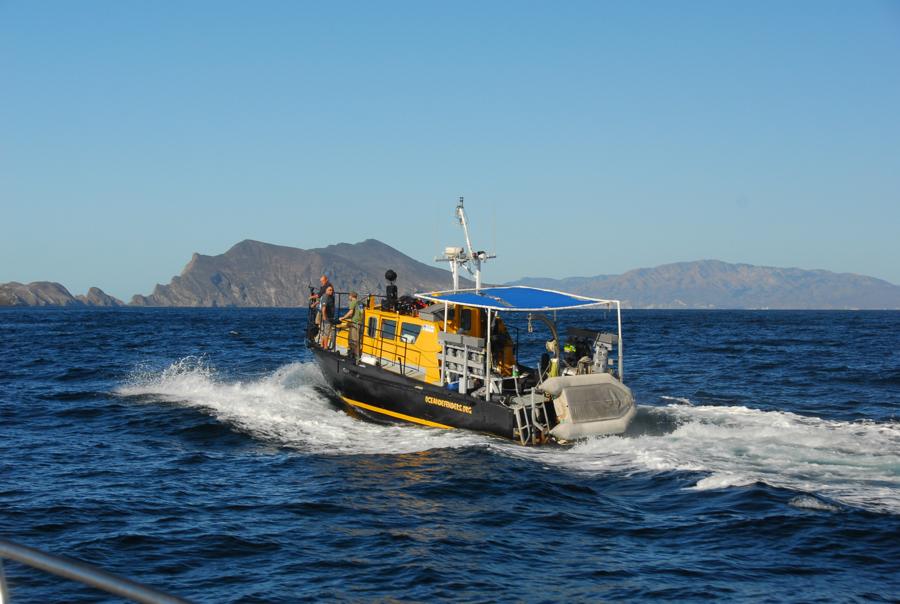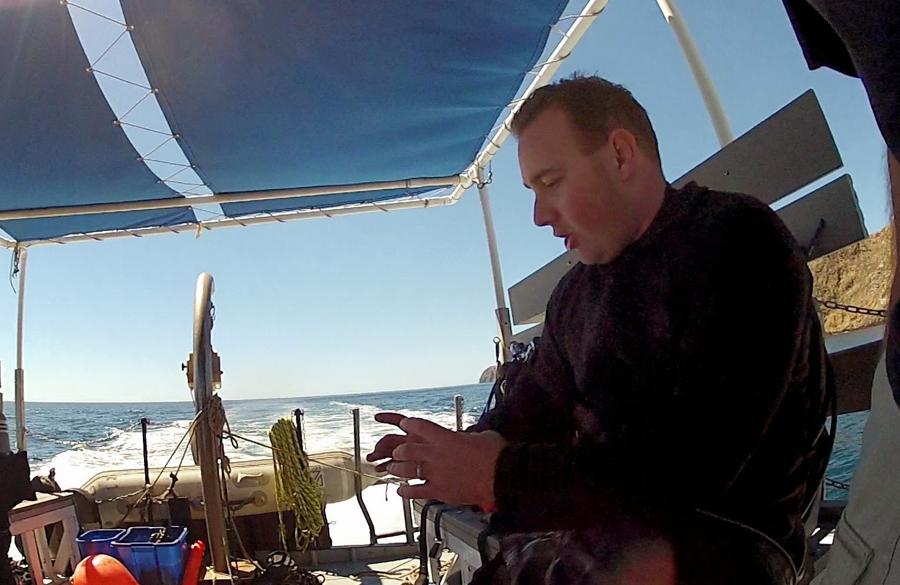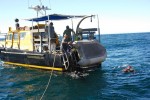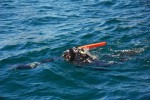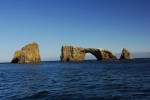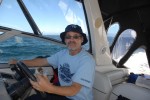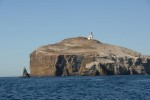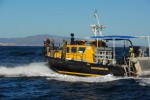I’ll admit, it was a thrill to have been invited out to Anacapa Island in September by Kurt Lieber and the Ocean Defenders Alliance (ODA) to observe them in action at what they do best: removing underwater debris and netting from the bottom of the ocean and helping to keep the environment clean and safe from underwater entanglements, which kill a lot of marine life every year.
Story by Michael Bear
We started off on their chase boat, the ‘Miss T,’ by fueling up at the dock. We then shadowed the larger vessel (their workhorse boat) the Clearwater out into the channel, towards Anacapa Island, about 2 hours away. The skies were clear and sunny, but it was a little choppy on the way out, with 4 ft swells visible on either side of the boat. We were kept company on the way out by the occasional dolphin and seagull, cruising alongside the boat.
The first indication that Mother Nature might not be in our favor was when we arrived at the first dive site, on the far west side of Anacapa. Here, the idea was for us shadow the ODA divers down to around 130 ft to the base of a pinnacle, where large amounts of rope and other debris had been identified for removal. Within minutes of arrival, Capt. Lieber on the Clearwater decided that conditions were too rough to safely anchor at the top of the pinnacle at 70 ft and send SCUBA divers down to that depth. There was legitimate concern that the anchor wouldn’t hold and divers might have difficulty in the strong currents–so, this dive site was scrapped. We followed the Clearwater, backtracking the way we had come, eastward, back around to the south side of the island, to what was hoped would be a calmer location, where several abandoned lobster traps had been identified for removal in shallower water. Here, too, unfortunately, the currents were swift and treacherous and Capt. Lieber made the call that conditions were unsafe for any diver without a Diver Propulsion Vehicle (DPV). That meant only ODA divers were properly equipped for the dive, so we, of course, respected his decision as captain, borne of many years of doing this type of underwater work and remained on the boat to observe.
The skipper of our vessel, Rex Levi, maneuvered us around closer to the Clearwater and after throwing them a line, we tied up to her, so that we could better observe the operations in progress. Within minutes, ODA divers, with double tanks strapped to their backs and powerful Diver Propulsion Vehicles (known to most divers as ‘underwater scooters) were in the water and heading for their ‘prey,’ the lobster traps. Their Halcyon R14 scooters allowed them to cruise up to 180 ft/minute, almost twice as fast as a diver with fins, and gave them tremendously expanded range underwater to reconnoiter possible debris sites which may be far from the boat or anchor area. It wasn’t long before we began seeing orange and yellow marker buoys popping here and there, as the abandoned lobster traps were marked for retrieval. After about an hour of watching the bags pop up, we watched the trail of bubbles as each diver began returning to the boat and the DM helped them back on, tired but happy that a good day’s work had been done. Later, I transferred over to the Clearwater to talk with long-time ODA diver Peter Fulks, who, along with his brother, Trevor Fulks, helped locate and mark many of the abandoned lobster traps. Peter explained how up to 3 traps would be strung together underwater with poly rope under a single buoy and it’s the poly rope which often comes loose and entangles marine life in it. Both the poly rope and traps are retrieved together whenever possible. Peter and his brother were on ‘the trigger’ (their scooters) for over an hour, locating and marking traps for retrieval. He said that they had been approached by half a dozen or so 3-4 ft Giant Sea Bass (Stereolepis gigas), who seemed unafraid of their scooters and just hung around while they marked the traps, watching them work. After all the traps and poly rope had been successfully retrieved, it was time to head back to the mainland before the wind started to pick up, so Capt. Lieber pulled anchor and we began the 2 hour trip back to Oxnard.
Captain Kurt Lieber has been with ODA since founding it in 2002 with a donated boat and a lot of enthusiasm from local activists. They obtained official non-profit status in 2002. By 2004, they were out pulling abandoned lobster traps off the coast of Laguna Beach, Orange County. In 2007, Sea Shepherd donated a 38-foot boat to ODA. Renamed the Clearwater, she replaced a smaller boat they had and thereby provided a much bigger and more reliable platform, allowing ODA to carry more volunteer crew and remove more abandoned traps and nets. In addition to doing invaluable work at sea, ODA also works onshore to educate the public about the vital need for clean and healthy oceans. Through educational presentations at schools, expos, festivals, and dive clubs, they strive to raise awareness in people of all types and ages about the plight of the oceans, and inspire them to join their efforts. ODA also reaches out to fishermen, restaurants, and the seafood community to enlighten them to these issues and seek to gain their commitment to becoming better stewards of the oceans. For more information on the Ocean Defenders Alliance, visit their website here.
- Credit: David Hershman
- Credit: David Hershman
- Credit: David Hershman
- Miss T Skipper Rex Levi. Photo credit: David Hershman
- Credit: David Hershman
- Credit: David Hershman
- Chase Boat ‘Miss T’. Credit: David Hershman
- Miss T Skipper Rex Levi/Credit: David Hershman


